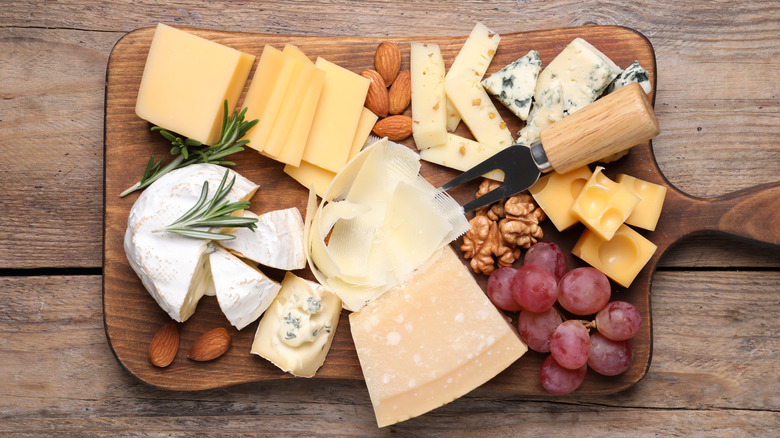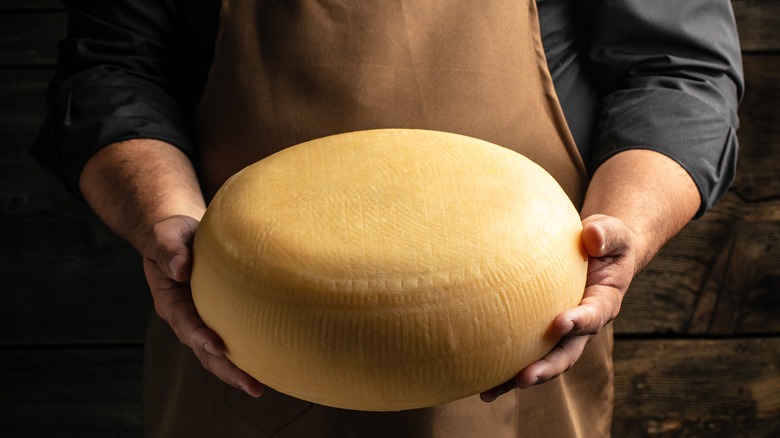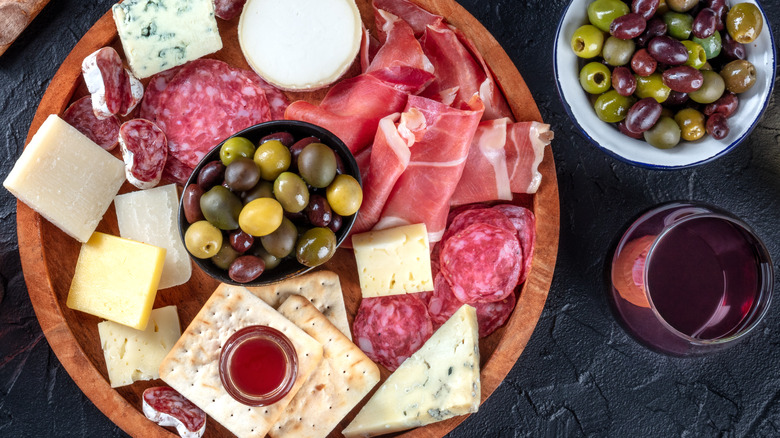What Cheese Has The Lowest Amount Of Lactose?
From soft, creamy classics like brie to hard, nutty standbys like parmigiano reggiano, cheese is a beloved and celebrated part of cultures around the world. In American cuisine, the art of charcuterie and cheese boards entered popular discourse in the '90s and have only grown in popularity.
But for those of us with whom lactose doesn't agree, these stunningly delicious spreads can be a sad sight. If you can't eat lactose, you may feel like you have to avoid the whole curated display. Thankfully, not all cheeses are created equal. Many commonly included types of cheese, including hard cheeses like Colby and Swiss, as well as aged cheeses like Parmigiano Reggiano, or non-cow cheese like goat are so low in lactose that they're considered practically free from lactose. Depending on the severity of your intolerance, this likely means that a whole lot more of that cheese board is fair game — aged cheddar contains only 0.4 to 0.6 grams per ounce, and research shows most people with sensitivities can comfortably consume up to 12 grams of lactose in a serving (via the National Institutions of Health).
The science behind low lactose cheese
If you've been avoiding dairy because of your lactose intolerance, learning you can eat many different kinds of cheese you know and love — not just dairy-free alternatives that don't necessarily hit the same — might come as a shock. Thankfully, dairy and lactose are not the same thing, so drinking a glass of milk and eating cheese that's undergone a very specific scientific process will have very different effects on a lactose-averse body.
So what is the process that makes these cheeses more consumable than we may have thought? Fermentation! Most hard cheeses begin by mixing starter cultures, primarily comprised of lactic acid bacteria, into milk. This starts a fermentation process that transforms much of the lactose in the milk into lactic acid during the early phases of cheese ripening. Once the process is complete, very little lactose remains — and the lactic acid that replaced it helps to preserve the cheese.
Aging is another factor that aids in lactose reduction since this process allows even more lactose to be converted to lactic acid. Cheeses like Grana Padano, Parmigiano Reggiano, and even aged cheddars contain only trace amounts of lactose, making them a safe choice for lactose-intolerant folks. Cheeses made from goat and sheep's milk are also good options, as these dairy varieties are naturally lower in lactose than cow's milk and are generally easier to digest. Next time you host a gathering, you'll be well prepared to arrange better cheese boards for lactose-intolerant enjoyment!
Avoid young and soft cheeses
First and foremost, remember that not every cheese gets a green light. Soft or young cheeses including burrata, cottage cheese, and ricotta have a higher lactose content than harder, aged cheeses and should probably be avoided. While it's still great news that those with lactose intolerance have more delicious cheese options available to them, remember that not every body is the same, and it's always best to proceed with an abundance of caution. Consulting a doctor before diving into the next cheese plate you see is a good idea, so you can get expert insight into how much lactose you can handle and can gauge from there how much cheese you're able to eat without issue.
These lower-lactose options are sure to cause less GI distress than a bowl of ice cream or a glass of milk, but there are still limits to the amount you can consume. So rather than loading up your plate with delicious hard and aged cheeses, take it slow and enjoy moderate proportions of these items in combination with the other foods.



